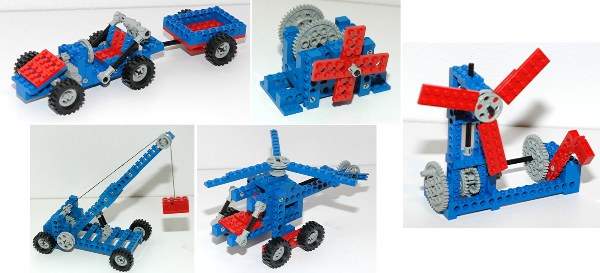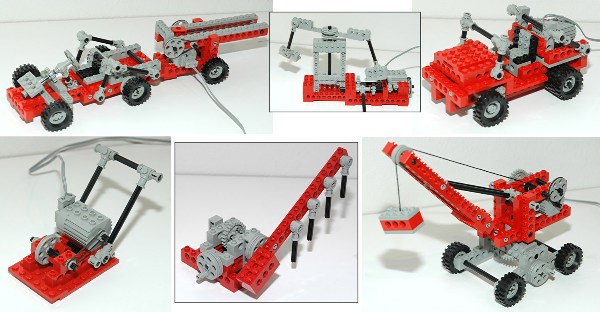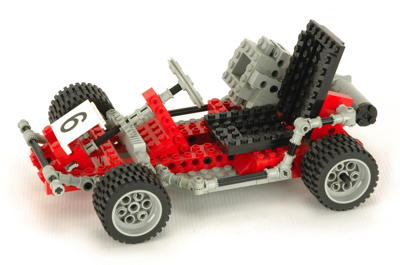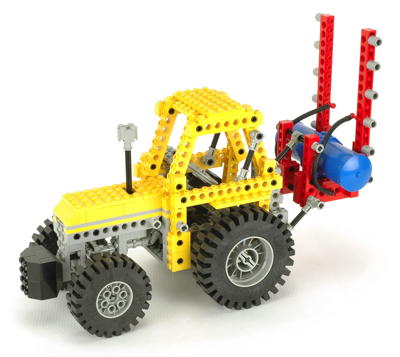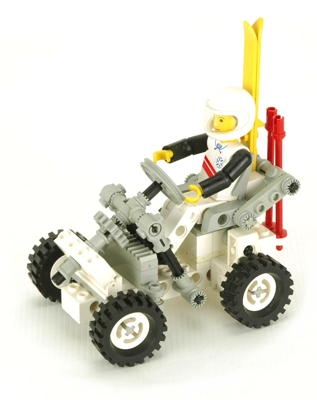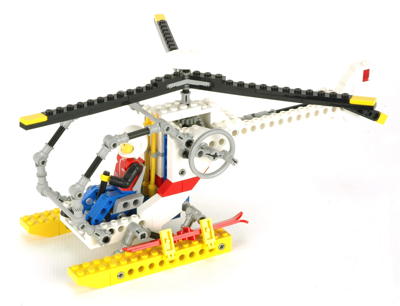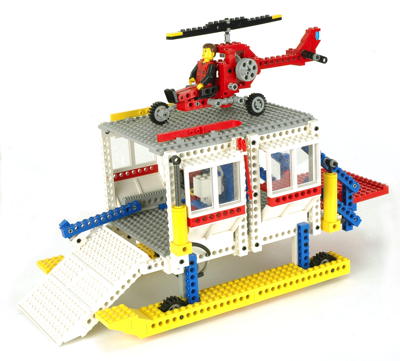Worm Gear
The new worm gear made it possible to achieve very high gear reductions
in a very small space. The worm gear is single threaded, which
means that it moves one tooth for each revolution. Since each of
the spur gears can mate with this screw, gear reduction of either 8,
16, 24, or 40 times can be achieved in a single stage.
The other advantage of the worm gear is that it cannot be
backdriven. To understand why, we need to use a little
Statics. When a spur gear tooth pushes on the worm gear, it
produces a force in the axial direction, along the direction of the
axle. But the worm teeth are not perpendicular to this force
because of the pitch angle of the screw, so the screw works like an
inclined plane. The force can be broken
into two components. The tangential component tends to try to
rotate the screw. The normal component tends to try to slide the
screw along the axle, but it also produces a frictional resistance in
the same direction as the tangential force. If the friction is
bigger than the tangential force, the screw cannot turn. Since
the tangent force and the friction both increase proportionally to the
applied gear force, the gear can never turn no matter how hard you
backdrive it. If the
pitch angle is big enough, or the friction coefficient low enough, some
worm gears can be backdriven. An example is a recirculating
ballscrew such as are sometimes used for automobile steering or commercial aircraft horizontal stabilizer trim.
This worm gear has only ever been made in one size and, until recently,
was only available in black.
Rotors
A pair of parts were introduced which are commonly used as rotors, with
2 and 3 blades respectively. They both have a cruciform slot in
the center to allow them to rotate with an axle. They then have a
stud which can be used to attach plates or other parts, and finally a
hole on the tip. These parts would end up getting used in lots of
applications other than just helicopter or airplane blades.
Technic
Figures and Accessories
Technic figures were introduced this year. These are not only
much bigger than the standard LEGO® minifig, they are vastly more
posable:
- Neck: 3 degrees of freedom (ball)
- Shoulders: 2 degrees of freedom (front-back, up-down)
- Elbows: 2 degrees of freedom (front-back, in-out)
- Wrists: 1 degree of freedom (rotation)
- Hips: 2 degrees of freedom (front-back, side-side)
- Knees: 1 degree of freedom (front-back)
- Ankles: 3 degrees of freedom (ball)
A number of accessories were also introduced for the figure. A
special seat (pictured) was specially made to fit the figures, although
many sets later used it even without the figures. There are
helmets with transparent visors. The Arctic Action sets also have
skis and ski poles.
|
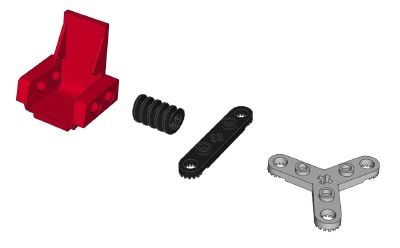
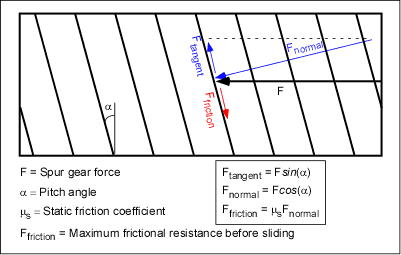
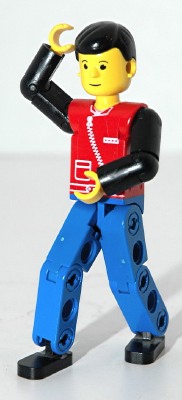
|


